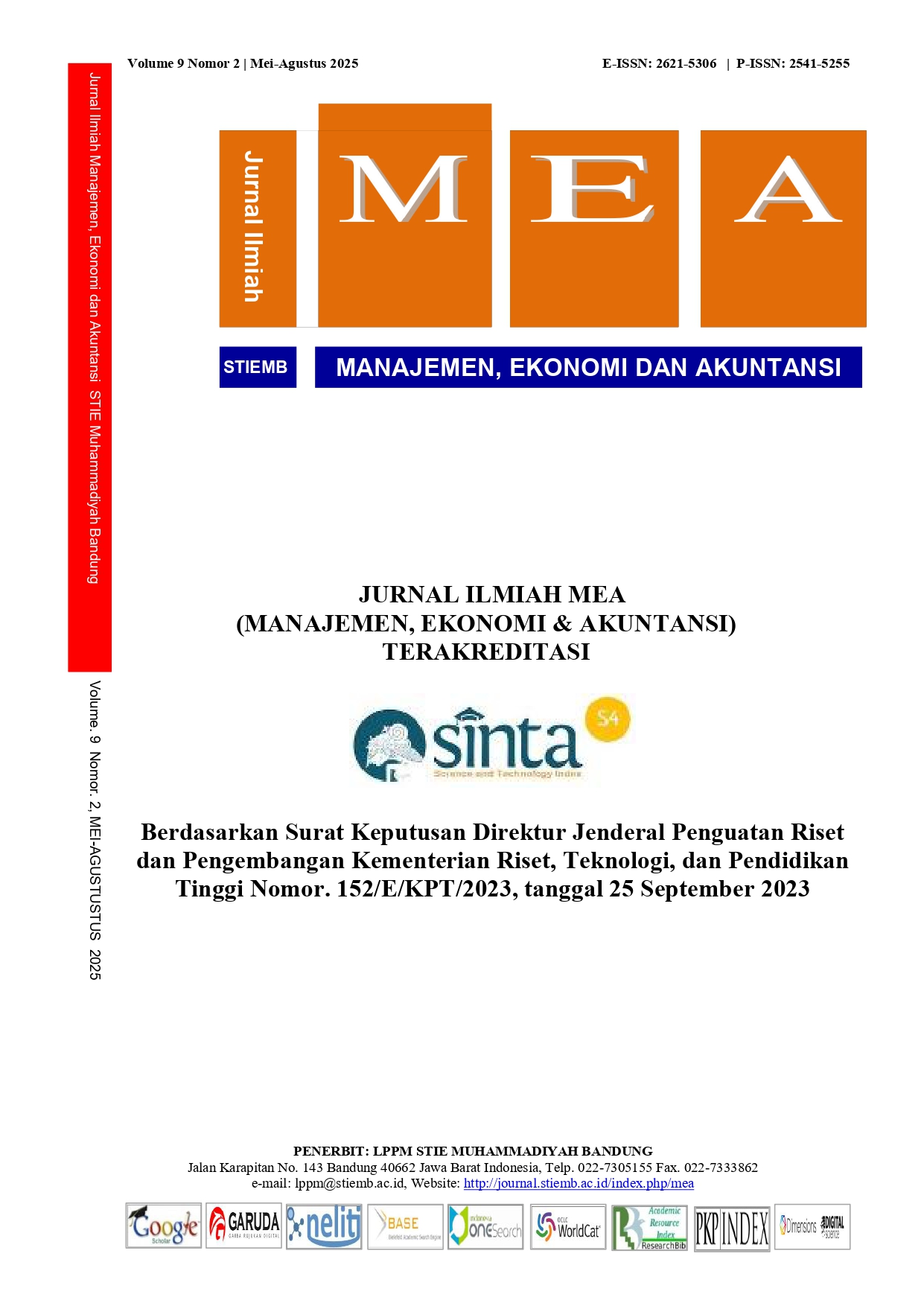UNDERSTANDING CONSUMER SWITCHING INTENTIONS TOWARD TELKOMSEL ONE IN WEST JAVA : A PUSH-PULL-MOORING MODEL APPROACH
Abstract
In the Society 5.0 era, seamless digital connectivity is essential. Telkom, through its “Five Bold Moves” transformation agenda, integrated IndiHome into its mobile subsidiary, Telkomsel, to streamline operations and enhance customer experience. Following this, Telkomsel launched Telkomsel One, a Fixed Mobile Convergence (FMC) product that combines mobile and fixed broadband into a single platform. The service offers a bundled package of internet, voice, and entertainment for a unified experience at home and on the go. Despite its strategic potential, adoption has not yet reached its potential in West Java, highlighting the need to understand consumer behavior better. This study applies the Push – Pull – Mooring (PPM) model to examine switching intentions toward Telkomsel One. Push factors include dissatisfaction, pull factors reflect perceived benefits and convenience, and mooring factors involve loyalty and switching costs. The study also explores generational differences among Generation Z, Millennials, and Generation X. Using SEM-PLS with 300 respondents in West Java, findings show that pull factors have the strongest influence on switching intentions, followed by moderate push effects, while mooring factors act as a significant barrier, particularly for older users. Gen Z is digitally open and engaged, but they are not typically the main decision-makers when it comes to household connectivity products. Millennials show a strong intent to adopt customizable services that offer clear value and fairness. Gen X is the most resistant due to attachment and complexity, requiring trust-driven and personalized support.
References
Alves Gomes, M., & Meisen, T. (2023). A review on customer segmentation methods for personalized customer targeting in e-commerce use cases. Information Systems and E-Business Management, 21(3), 527–570.
APJII. (2024). Survei Internet APJII 2024. https://survei.apjii.or.id/survei/register/33?type=free
Bansal, H. S., Taylor, S. F., & St. James, Y. (2005). “Migrating” to new service providers: Toward a unifying framework of consumers’ switching behaviors. Journal of the Academy of Marketing Science, 33(1), 96–115.
Condoluci, M., Johnson, S. H., Ayadurai, V., Lema, M. A., Cuevas, M. A., Dohler, M., & Mahmoodi, T. (2019). Fixed-mobile convergence in the 5G era: From hybrid access to converged core. Ieee Network, 33(2), 138–145.
Francis, T., & Hoefel, F. (2018). True Gen’: Generation Z and its implications for companies. McKinsey & Company, 12(2), 1–10.
Fujii, T., Guo, T., & Kamoshida, A. (2018). A consideration of service strategy of Japanese electric manufacturers to realize super smart society (Society 5.0). International Conference on Knowledge Management in Organizations, 634–645.
Hair Jr, J. F., Hult, G. T. M., Ringle, C. M., Sarstedt, M., Danks, N. P., & Ray, S. (2021). Partial least squares structural equation modeling (PLS-SEM) using R: A workbook. Springer Nature.
Hsieh, J.-K., Hsieh, Y.-C., Chiu, H.-C., & Feng, Y.-C. (2012). Post-adoption switching behavior for online service substitutes: A perspective of the push–pull–mooring framework. Computers in Human Behavior, 28(5), 1912–1920.
Jung, J., Han, H., & Oh, M. (2017). Travelers’ switching behavior in the airline industry from the perspective of the push-pull-mooring framework. Tourism Management, 59, 139–153.
Kotler, P., Keller, K. L., & Chernev, A. (2022). Marketing Management (L. Huddon (ed.). Pearson Education Limited.
Malhotra, N. K., Nunan, D., & Birks, D. F. (2020). Marketing research. Pearson UK.
Mothersbaugh, D. L., & Hawkins, D. I. (2016). Consumer behavior: Building marketing strategy. McGraw-Hill.
Quoquab, F., Mohammad, J., Yasin, N. M., & Abdullah, N. L. (2018). Antecedents of switching intention in the mobile telecommunications industry: a partial least square approach. Asia Pacific Journal of Marketing and Logistics, 30(4), 1087–1111.
Roblek, V., Meško, M., Bach, M. P., Thorpe, O., & Šprajc, P. (2020). The interaction between internet, sustainable development, and emergence of society 5.0. Data, 5(3), 80.
Sekaran, U., & Bougie, R. (2016). Research methods for business: A skill building approach. john wiley & sons.
Sugandha, A. P., & Indarwati, T. A. (2021). Pengaruh push, pull, dan mooring terhadap switching intention pada konsumen pengguna wifi DI era pandemi covid-19. Jurnal Ilmu Manajemen, 9(4), 1537–1548.
Van Der Merwe, M. C. (2015). A Comparison Between Switching Intention and Switching Behaviour in the South African Mobile Telecommunications Industry. University of Pretoria (South Africa).
Wirtz, J., Xiao, P., Chiang, J., & Malhotra, N. (2014). Contrasting the drivers of switching intent and switching behavior in contractual service settings. Journal of Retailing, 90(4), 463–480.
Zulkarnaen, W., Amin, N. N. (2018). Pengaruh Strategi Penetapan Harga Terhadap Kepuasan Konsumen. Jurnal Ilmiah MEA (Manajemen, Ekonomi, & Akuntansi), 2(1), 106-128.
Copyright (c) 2025 Jurnal Ilmiah Manajemen, Ekonomi, & Akuntansi (MEA)

This work is licensed under a Creative Commons Attribution-NonCommercial 4.0 International License.





















